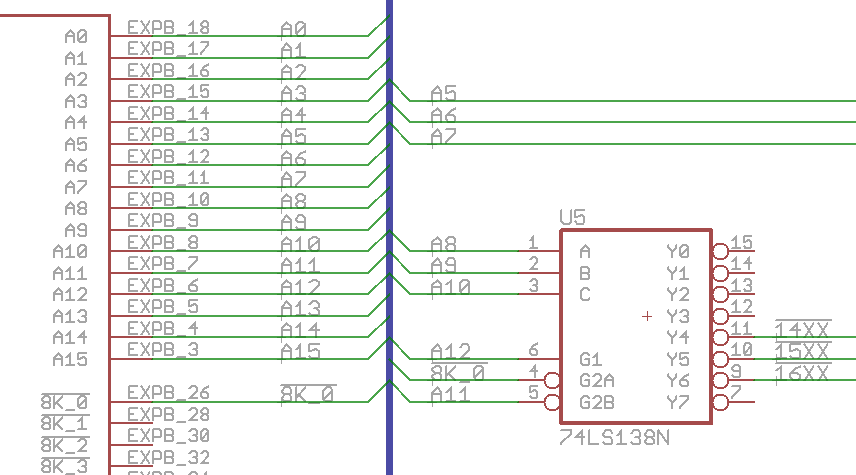By Bob Applegate
Adding I/O devices that don’t need much address space. On the KIM-1, the space from 1400-17FF is grouped into the K0 block but only 17xx are used, leaving 1400-16FF open for use. To decode that range into four blocks of 256 bytes is easy using a single chip and a few signals from the KIM Clone expansion bus:
Everyone has a 74LS138 in their parts collection, so just connect a few signals from the expansion bus and use one of the three signals from the 138 to decode which block you want to use. Use the A0-A7 address lines to decode into smaller pieces.
See also:
History of the TIM in the Jolt
Jolt software
On this page software for the TIM is described.
- DEMON
- Tiny Basic ad Resident Assembler Program
- Focal-65 V3D
...
Images of the Jolt
Above photos by The National Museum of American History.
Photos from https://vinta...
Jolt with a 74154 decoder
The early Jolts were equipped with a 74154 decoder for the glue logic instead of the 74LS00/04/27 of the later and more ...

